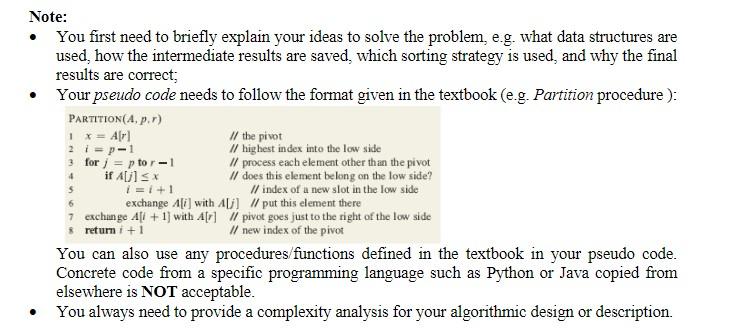Question
Design an efficient algorithm (pseudo code) that add an interval with integer end points to a set of disjoint intervals to form a new set
Design an efficient algorithm (pseudo code) that add an interval with integer end points to a set of disjoint intervals to form a new set of disjoint intervals such that the overlapping intervals are merged into a new interval. For example, given a set of disjoint intervals [-5, 0], [2, 4], [5, 8], [10, 15], [17, 20], [25, 30]; adding a new interval [3, 12] results in the new set of disjoint intervals [-5, 0], [2, 15], [17, 20], and [25, 30]. The initial set of disjoint intervals can be in random order. Analyze the time complexity of your algorithm in terms of the size n of the set of disjoint intervals. 
Step by Step Solution
There are 3 Steps involved in it
Step: 1

Get Instant Access to Expert-Tailored Solutions
See step-by-step solutions with expert insights and AI powered tools for academic success
Step: 2

Step: 3

Ace Your Homework with AI
Get the answers you need in no time with our AI-driven, step-by-step assistance
Get Started


